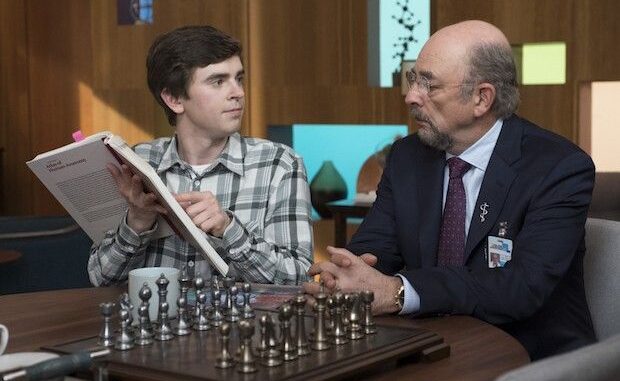
The journey of Freddie Highmore’s acting career is a rare and compelling narrative of sustained excellence, defying the common pitfalls often faced by child stars. From his endearing performances in beloved family films to his intense and critically acclaimed adult roles, Highmore has consistently demonstrated an extraordinary range and a profound commitment to his craft. This evolution culminated in his portrayal of Dr. Shaun Murphy in “The Good Doctor,” a role that not only showcases his clinical brilliance as an actor but also serves as a testament to his remarkable ability to seamlessly transition and adapt, evolving from an innocent cinematic presence into a powerhouse performer capable of deep psychological insight.
Highmore first captured global attention at a remarkably young age, notably with his roles in “Finding Neverland” (2004) and “Charlie and the Chocolate Factory” (2005). In “Finding Neverland,” as Peter Llewelyn Davies, he delivered a performance brimming with raw emotion, capturing the essence of childhood grief and imagination with a maturity far beyond his years. His scenes with Johnny Depp, filled with subtle glances and nuanced expressions, hinted at an innate talent for connecting with complex characters. Following this, his turn as Charlie Bucket, the earnest and kind-hearted boy in Tim Burton’s whimsical adaptation, solidified his image as a charming and relatable child actor. These early roles, while seemingly disparate in their fantastical elements, established Highmore’s ability to ground fantastical narratives in genuine human emotion, laying the groundwork for the authenticity that would define his later work.
However, the transition from successful child actor to respected adult performer is notoriously difficult. Many child stars struggle to shed their early personas, often finding themselves typecast or unable to sustain the initial momentum. Highmore, however, navigated this period with exceptional grace and strategic intelligence. He chose roles that challenged him and allowed him to explore different facets of the human condition, subtly pushing the boundaries of his perceived range. This careful selection of projects was pivotal in demonstrating his versatility and preventing him from being confined to the “innocent child” archetype.

The most significant turning point in his evolution came with his starring role as Norman Bates in “Bates Motel” (2013-2017). This prequel series to Alfred Hitchcock’s “Psycho” demanded an entirely different kind of performance: dark, psychologically complex, and deeply unsettling. As Norman, Highmore depicted the gradual descent into madness, portraying the internal turmoil, the Oedipal complex, and the nascent psychopathy with chilling conviction. This role was a revelation, showcasing his remarkable ability to inhabit a character consumed by inner demons, a stark contrast to his earlier, more innocent portrayances. His performance in “Bates Motel” was not merely impressive for its dramatic weight but for its sustained intensity over five seasons, proving his endurance and depth as a leading man. He managed to make audiences empathize with a future serial killer, a feat that speaks volumes about his acting prowess and his capacity to delve into the darkest corners of the human psyche.
This rigorous training in complex character work, honed over years, prepared him perfectly for Dr. Shaun Murphy. In “The Good Doctor”, Highmore seamlessly integrates the innocence and vulnerability reminiscent of his child roles with the intense focus and intellectual precision he developed during his “Bates Motel” period. Shaun Murphy, while neurodivergent, shares with Norman Bates a certain internal processing intensity, an almost obsessive attention to detail, albeit channeled for good rather than evil. Highmore’s ability to convey Shaun’s unique internal world – his struggles with social cues, his directness, his moments of emotional overwhelm, and his extraordinary medical insights – is a culmination of his diverse experiences. He draws on his capacity for detailed character study to bring out Shaun’s meticulousness, and on his emotional depth to convey the character’s profound empathy despite his social challenges.
What truly signifies Highmore’s “clinical brilliance” in “The Good Doctor” is his ability to portray a neurological condition with such authenticity and respect, without ever resorting to caricature. His performance is a masterclass in controlled yet expressive acting. Every subtle gesture, every specific vocalization, and every nuanced facial expression is precisely calibrated to reflect Shaun’s internal state. This isn’t just acting; it’s a profound study of human behavior, executed with the precision of a surgeon. He doesn’t merely simulate autism; he embodies it with a sensitivity that has garnered widespread praise from the medical community and autism advocates alike. His commitment to research and understanding allows him to navigate the complexities of Shaun’s condition, making his performance both medically believable and deeply human.
Highmore’s evolution also extends beyond his on-screen roles. His involvement in “The Good Doctor” as a producer, director, and even a writer for certain episodes further highlights his intellectual and artistic growth. This multi-faceted engagement demonstrates a profound understanding of storytelling and character development from all angles, proving that his brilliance extends behind the camera as well. He is not just an actor performing a role; he is a comprehensive artist contributing to the entire narrative fabric.
In essence, Freddie Highmore’s career arc is a remarkable journey from the innocence of childhood stardom to the profound complexity of adult roles, culminating in the “clinical brilliance” of Dr. Shaun Murphy. It is a testament to his talent, dedication, and discerning choices that he has not only survived the often-treacherous waters of child acting but has emerged as one of the most respected and versatile performers of his generation. His evolution showcases an actor who constantly seeks growth, embraces challenge, and consistently delivers performances that are not only entertaining but also deeply insightful and socially resonant. His work in “The Good Doctor” stands as a powerful testament to an artist truly at the peak of his powers, continually refining his craft with every role he undertakes.
